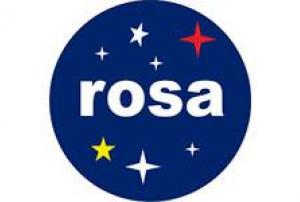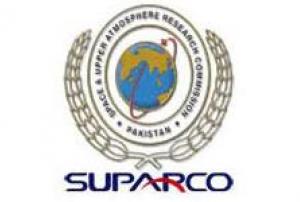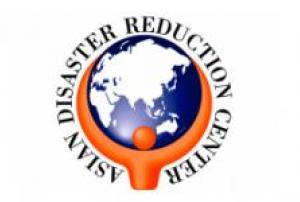Flood
Definition
Facts and figures
Further information
UN-SPIDER Regional Support Offices with hazard-specific expertise
Related content on the Knowledge Portal
The UN-SPIDER Regional Support Office (RSO) in Romania is hosted by the Romanian Space Agency (ROSA). The cooperation agreement between ROSA and UNOOSA was signed on occasion of the 52nd COPUOS, 4 June 2009.
Established in 1991, by the Government Decision no. 923/ 20 Nov 1995, ROSA is an independent public institution.
The mission of the Agency:
- to coordinate the national space research and applications programs
- to promote space development
- to be the Government representative in the international space cooperation
- to develop specific project oriented research
ROSA is authorized to establish research and development centres oriented on specific objectives of the Romanian Space Programme.
The Space and Upper Atmosphere Research Commission (SUPARCO) of Pakistan and the United Nations Office of Outer space Affairs (UNOOSA) signed the cooperation agreement on the establishment of a UN-SPIDER Regional Support Office (RSO) on the occasion of the 47th Scientific and Technical Subcommittee sessions on 12 February 2010.
SUPARCO, the national space agency, was established in 1961 as a Committee and was granted the status of a Commission in 1981. SUPARCO is mandated to conduct R&D in space science, space technology, and their peaceful applications in the country. It works towards developing indigenous capabilities in space technology and promoting space applications for socio-economic uplift of the country.
Address:
Pakistan Space and Upper Atmosphere Research Commission (SUPARCO)
Islamabad Highway,
Islamabad-44000 PakistanMission/Objective:
To provide fast…
read moreThe Asia Disaster Reduction Center (ADRC) and the United Nations Office of Outer Space Affairs (UNOOSA) signed the cooperation agreement on establishment of the ADRC UN-SPIDER Regional Support Office (RSO) on the occasion of the 52nd session of the Committee on the Peaceful Uses of Outer Space (COPUOS) on 4th June 2009.
Namibia's President Pohamba declares floods emergency
Namibia's President Hifikepunye Pohamba has declared a state of emergency following serious flooding in the north of the southern African country.
More than 20 people are reported to have drowned and some 10,000 displaced, many from the town of Oshakati.
The BBC's Frauke Jensen in the capital Windhoek says livestock have been lost, crops destroyed and roads washed away.
There has been heavy rainfall since January, causing water levels to rise in the Zambezi and Okavango rivers.
Two years ago, more than 90 people were killed by floods in Namibia.
Source: http://www.bbc.co.uk/news/world-africa-12913487
The flood already exceeds the 2009 flood, which was then considered to be the highest in known history. Reports from upstream (Angola) indicate that more water is expected and the Namibian Meteorological Services predicted more rains next week.
Contacts
…
read moreThe focus of this study was to thoroughly exploit the capability of very high-resolution (VHR) satellite imagery such as Ikonos and QuickBird for disaster mitigation. An efficient automated methodology that detects damage was implemented to derive the rich information available from VHR satellite imagery. Consequently, the detected results and the VHR satellite imagery are attractively presented through a fly-over animation and visualization. The aim is to assist the field-based damage estimation and to strengthen public awareness. The available Ikonos and QuickBird data captured after the Bam, Iran, earthquake in December 2003 was employed to demonstrate the competence of the automated detection algorithm and fly-over animation/visualization. These results are consistent with the field-based damage results.
Little is currently known about the potential role of satellite imagery for monitoring and assessing the recovery phase of the disaster management cycle. The impacts and aftermath of Hurricane Katrina provide a unique opportunity to explore recovery at a time when commercial high-resolution remote sensing platforms offer an optimal resolution for such studies. The spatial, spectral and temporal signatures of the recovery process are currently being explored based on field and imagery based observations along the Gulf of Mexico Coastline of the United States.
read more
The work seeks to document and describe characteristics of the recovery process through time. A NHC Quick Response Field Grant supported field deployment to collect benchmark (9 month post-event) ‘ground truth’ datasets for informing the remote sensing analysis and validating results. During the nine day deployment within the Hurricane Katrina impact area, the field team documented a range of…This study developed a rapid assessment algorithm for post-hurricane forest damage estimation using moderate resolution imaging spectroradiometer (MODIS) measurements. The performance of five commonly used vegetation indices as post-hurricane forest damage indicators was investigated through statistical analysis. The Normalized Difference Infrared Index (NDII) was identified as the optimal damage indicator among these vegetation indices. An approach for detecting forest damage at a regional scale, without relying on ground inventory or sampling, was designed and validated. The validation showed that the relative change of pre- and post-hurricane NDII was linearly related to the damage severity estimated by the ground inventory with the coefficient of determination 0.79. This approach was applied to evaluate forest damage severity and the impacted region caused by Hurricane Katrina.
Severe flood events turned out to be the most devastating catastrophes for Europe’s population, economy and environment during the past decades. The total loss caused by the August 2002 flood is estimated to be 10 billion Euros for Germany alone. Due to their capability to present a synoptic view of the spatial extent of floods, remote sensing technology, and especially synthetic aperture radar (SAR) systems, have been successfully applied for flood mapping and monitoring applications. However, the quality and accuracy of the flood masks and derived flood parameters always depends on the scale and the geometric precision of the original data as well as on the classification accuracy of the derived data products. The incorporation of auxiliary information such as elevation data can help to improve the plausibility and reliability of the derived flood masks as well as higher level products. This paper presents methods to improve the matching of flood masks with…
read moreThe use of Earth Observation techniques in the context of hazard management issues has received growing importance in recent years. Due to global climate change the scientific community foresees an increase in the intensity and frequency of extreme weather events, such as hurricanes, floods and windstorms. Specifically, floods already results in estimates of up to 25,000 annual deaths worldwide, extensive homelessness, disaster-induced disease, crop and livestock damage and other serious harm. The nearly allweather capacity constitutes the main advantage of SAR data above optical systems for mapping of flood events. The high resolution, the multi-polarization and multi-incidence angle capability of TerraSAR-X, its quick site access and receiving times open very interesting perspectives for flood mapping, assessment of damages after a hazard. TerraSAR-X data, coupled with the use of optical data and auxiliary data allows getting one step further in the development of…
read more





